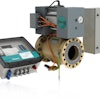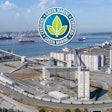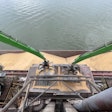
As industries across the globe pivot towards more sustainable practices, the introduction of the Sustainable Aviation Fuel (SAF) tax credit represents a significant and potentially transformational incentive. This initiative not only underscores the growing importance of reducing carbon emissions in the aviation sector but also highlights the critical role of what is sustainable aviation fuel in achieving environmental benchmarks. Understanding how this aligns with broader sustainability goals, including the benefits of sustainable aviation fuel, is crucial for stakeholders in both the aviation and agricultural sectors. The incentive illustrates a pivotal shift towards renewable energy sources, demonstrating a clear commitment to greener alternatives that directly impact the grain industry and beyond.
Impact of SAF credits on agricultural practices
Sustainable Aviation Fuel (SAF) credits are designed to encourage the adoption of cleaner fuel alternatives in the aviation industry, with direct implications for agricultural practices. By incentivizing the production and use of SAF, these credits can influence the cultivation of crops used in biofuel production. This shift not only supports the transition towards sustainable aviation but also promotes agricultural diversification and resilience.
To be eligible for SAF credits, agricultural producers must meet specific criteria, which typically include sustainable farming practices and the ability to produce biofuel-compatible crops. These requirements ensure that the environmental benefits of SAF are maximized, encouraging farmers to adopt more sustainable agricultural techniques. This eligibility criterion is crucial for maintaining the integrity and goals of the SAF incentives.
While the adoption of SAF credits offers significant environmental benefits, it also presents challenges for farmers. Transitioning to crops suitable for biofuel production may require changes in land use, agricultural inputs, and farming techniques. However, the benefits, including potential increases in crop demand and prices, can offset these challenges. Moreover, participating in the SAF program can provide farmers with a new revenue stream, contributing to economic sustainability in the agricultural sector.
Economic implications for the grain industry
The introduction of the sustainable aviation fuel tax credit influences the grain industry by altering crop production costs and potential revenue streams. As you transition to crops suitable for biofuel, initial investments in new agricultural technologies and practices may increase production costs. However, these changes can lead to higher crop yields and improved crop resilience, potentially increasing your overall revenue over time.
The demand for biofuel-compatible crops is expected to rise, providing you with new market opportunities. This shift not only opens up domestic markets but also international ones, as global demand for sustainable aviation fuel grows. Access to these new markets can significantly enhance your business prospects, positioning you to capitalize on the growing trend towards renewable energy sources.
The increased demand for specific crops used in sustainable aviation fuel production typically leads to higher crop prices. This price surge can result in increased income for you as a farmer, provided the cost of production does not outweigh the price benefits. It is crucial for you to monitor these economic dynamics closely to maximize the financial benefits of participating in the sustainable aviation fuel market.
Environmental benefits and trade-offs
The adoption of SAF significantly reduces greenhouse gas emissions compared to traditional jet fuels. By utilizing biofuels derived from crops, SAF can lower carbon emissions during flight, contributing to the aviation industry's carbon neutrality goals. This shift not only aligns with global climate change initiatives but also enhances your reputation as a sustainable practitioner in the agricultural sector.
While SAF promotes reduced carbon emissions, it raises concerns regarding soil health and biodiversity. The increased cultivation of biofuel crops can lead to monoculture practices, potentially depleting soil nutrients and reducing biodiversity. It is essential for you to implement sustainable farming practices that maintain soil health and promote biodiversity, ensuring that the environmental benefits of SAF do not come at the cost of agricultural sustainability.
Comparatively, SAF offers a cleaner alternative to traditional jet fuel, which is derived from fossil fuels and is a significant source of carbon emissions. The transition to SAF not only helps in mitigating climate change but also reduces dependence on non-renewable energy sources. This transition provides you with an opportunity to contribute to a sustainable future, aligning your agricultural practices with global energy and environmental objectives.
Policy and regulation considerations
The SAF tax credit is bolstered by various government incentives, which mandate specific production standards and sustainable practices for eligibility. These regulations ensure that the biofuels produced contribute effectively to environmental goals. It is crucial for you to stay informed about these evolving requirements to fully benefit from the incentives offered.
Input from both the agricultural and biofuel sectors has been instrumental in shaping the policies surrounding sustainable aviation fuel. This feedback loop helps refine the incentives and ensures they are practical and beneficial for all stakeholders involved. Engaging with these discussions can provide you with insights into future industry trends and regulatory changes.
Looking forward, continuous adjustments in legislation and the introduction of new tax credits are anticipated as the demand for sustainable aviation fuel grows. These changes will likely focus on enhancing the efficiency and sustainability of biofuel production processes. Keeping abreast of these legislative developments is essential for maximizing the potential benefits of your involvement in sustainable aviation fuel production.
Looking ahead: SAF's role in sustainable agriculture
As SAF continues to evolve, technological innovations play a crucial role in enhancing the efficiency and scalability of SAF production. Advances in biotechnology and chemical engineering are expected to improve the conversion rates of biomass to fuel, reducing overall production costs and making SAF more competitive with conventional fuels. These technological strides not only bolster the economic viability of SAF but also encourage wider adoption across the aviation industry.
To meet the growing demand for sustainable aviation fuel, scaling production and diversifying feedstock sources are essential. Expanding the range of suitable raw materials, including non-food crops and agricultural residues, can significantly increase the volume of available biomass for SAF production. This expansion not only helps in stabilizing supply chains but also reduces competition for food resources, aligning with sustainable agricultural practices.
The potential for sustainable aviation fuel to make a global impact is immense, particularly when combined with robust industry collaboration. By fostering partnerships between agricultural sectors, biofuel producers, and aviation companies, the SAF market can achieve greater integration and efficiency. These collaborations are vital for sharing knowledge, optimizing resource use, and driving innovation, ultimately contributing to the reduction of greenhouse gas emissions on a global scale.
Throughout this exploration of SAF tax credits and their intersection with the grain industry, we've navigated the comprehensive impacts, from economic implications for grain producers to the broader environmental benefits. The dialogue has underscored how these tax incentives are pivotal in steering both the aviation and agricultural sectors towards more sustainable horizons, weaving through the complexities of crop production shifts, market evolution, and the critical balance between agricultural and environmental health. In fostering this evolution, the article has pinpointed the essential role of government policies, technological advancements, and sector-wide collaboration in nurturing a future where green practices are not just aspirational but foundational.
Looking forward, the trajectory of the SAF incentive highlights an exciting pathway for advancing sustainable agricultural methods, expanding biofuel feedstock diversity, and catalyzing global efforts in reducing carbon footprints. It prompts a call to action for stakeholders across the spectrum to engage deeply with these initiatives, suggesting that the pursuit of sustainability within the aviation fuel sector holds untapped potential to drive significant economic and environmental transformations. The journey towards such impactful change will hinge on continued innovation, informed policy-making, and the collective will to invest in practices that bolster sustainability for the betterment of our global community.
.jpg?auto=format%2Ccompress&crop=faces&fit=crop&h=48&q=70&w=48)


















